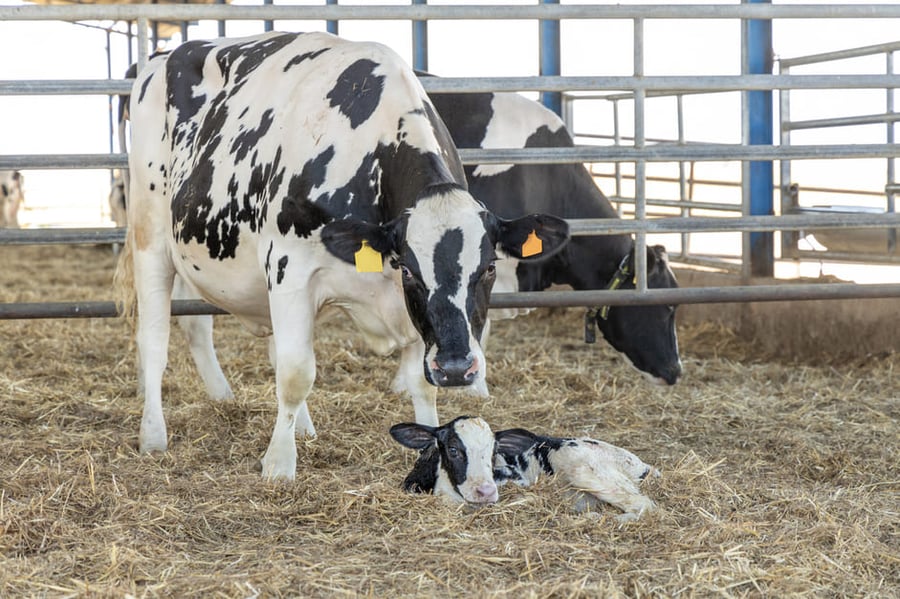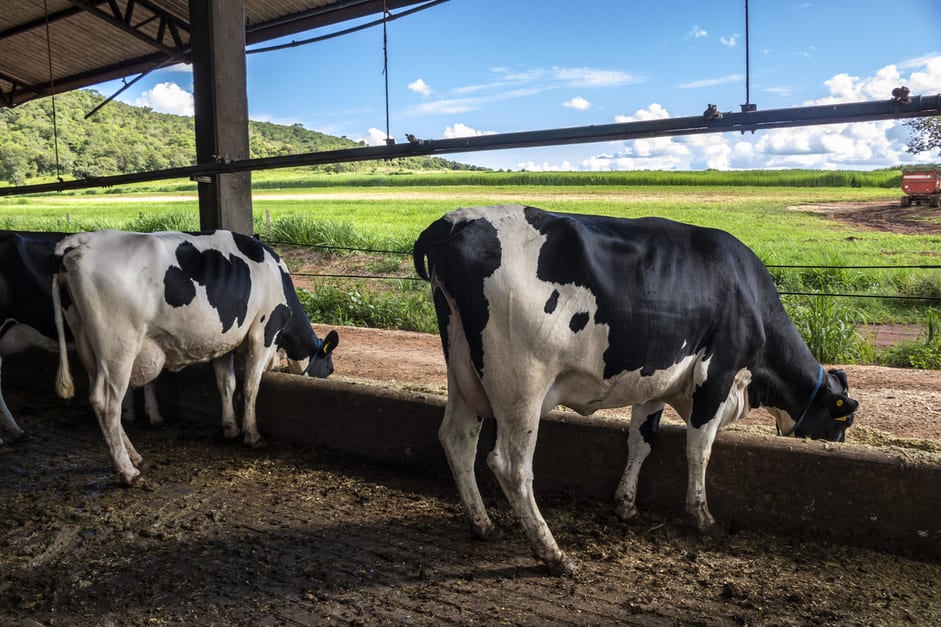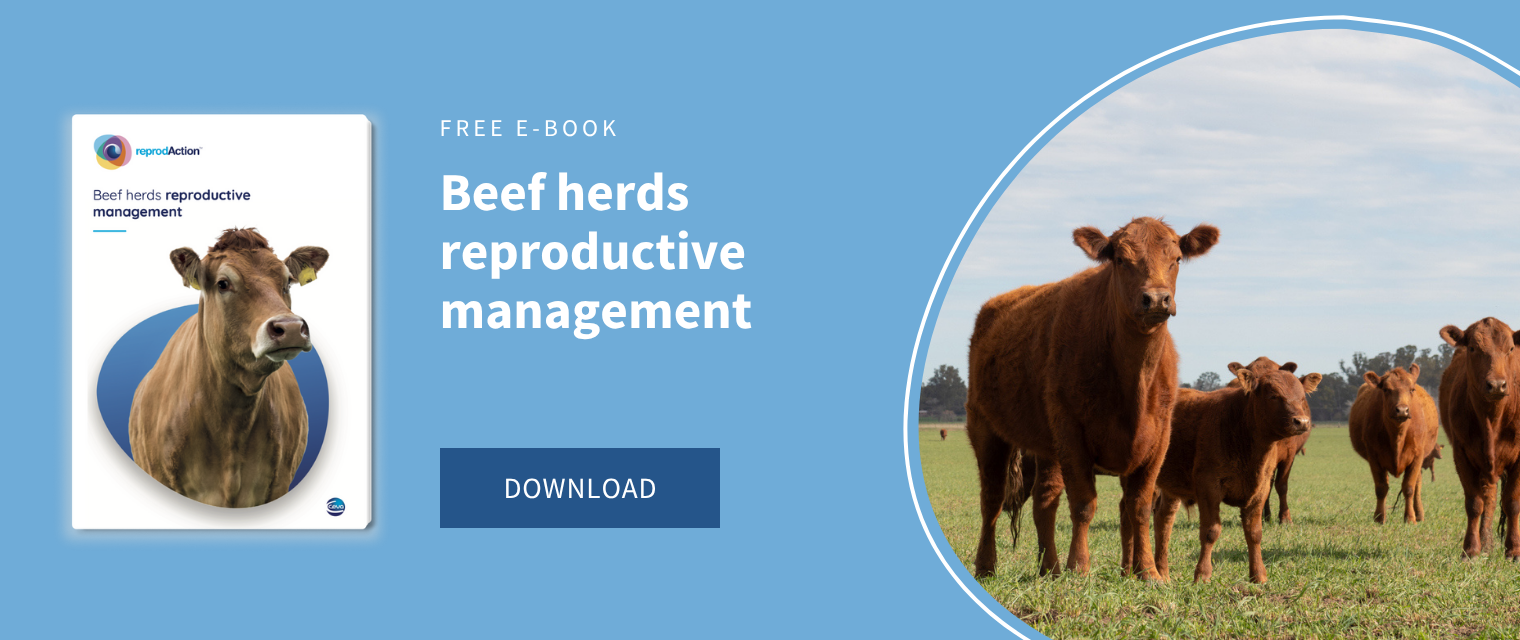Uterine pathology is one of the most important problems in cattle farms. The main alterations of the uterus in the non-pregnant cow are inflammatory pathologies. These disorders can vary greatly in severity, ranging from those that produce general symptoms and affect the entire uterine wall (metritis) to those that only present local symptoms (clinical endometritis) or undergo a subclinical course (subclinical endometritis), and that only affect the inner layer of the uterus, the endometrium. However, in all cases, both reproduction and production of farms will be adversely affected, causing significant economic losses if the incidence is not maintained at a controlled level.
Numerous studies have been published on the effect of uterine pathology on productive (milk production, milk quality) and reproductive parameters (intervals between calving and the first artificial insemination, gestation, fertility, etc.) and, in most cases, this effect is negative, regardless of the process in question1,2,3.
Definition
Metritis is an acute uterine disease that can also affect other organs of the animal. Although it usually appears within the first 10 days postpartum, it may occur within 21 days of parturition. It is characterised by the presence of general symptoms such as fever, inappetence, increased heart rate, dehydration, pain, and decreased production. Additionally, the uterus is enlarged and contains a fluid of variable appearance, ranging from watery and reddish-brown to viscous and whitish, often with a fetid odour. Histologically, it is an inflammation affecting all layers of the uterus, from the endometrium to the serosa. Metritis is classified according to the severity of the general symptoms from grade I (mildest, no general symptoms) to III (most severe). Its incidence ranges from 10 to 30%1,2,3.
Diagnosis
As metritis is a clinical disease with very clear symptoms, diagnosis is relatively simple:
- First, the general state of the animal will indicate the presence of a disease: elevated body temperature, reduced milk production, lack of appetite, dullness, etc.
- Secondly, calving proximity and certain factors that predispose animals to metritis, such as dystocia or retained placenta, twin births will already point us towards the diagnosis of this pathology.
- Finally, the presence of abnormal discharges from the vagina and an enlarged uterus will lead to a definitive diagnosis.
Daily monitoring of temperature and production, as well as inspection of vaginal secretions in the first days postpartum will facilitate an early diagnosis and thus reduce the negative effects of metritis. Nowadays, work is underway to implement the use of new technologies such as activity monitors, biomarkers, and machine learning algorithms for the early diagnosis of this and other pathologies4.
Metritis associated costs
The cost of this disease varies according to the authors. In a recent study using data from 11733 dairy cows from 16 farms in the USA, the average estimated cost was $511 with a range from $240 to $8846. This cost is mainly due to the decrease in milk production and reproductive efficiency and the increased risk of culling.
Risk factors of metritis in cattle
During calving, the anatomical barriers (vulva, vestibular constrictor muscle and cervix) that prevent the entry of microorganisms into the uterus are relaxed to allow the emergence of the foetus and the placenta. Therefore, during parturition there is inevitably an entry of microorganisms into the uterus, which will be eliminated during the first weeks postpartum due to the action of the innate immune system (polymorphonuclear neutrophils, among others). The health of the cow’s uterus will depend on the balance between the microorganisms (quantity and pathogenicity) entering the uterus and the uterine defences.

There is a close relationship between reproductive problems at calving (dystocia and retained placenta) and metritis in cattle, as well as metabolic problems in the pre- and post-partum period (hypocalcaemia and ketosis). The former facilitates the entry of large numbers of microorganisms into the uterus, while the latter reduces the efficiency of uterine defences4.
Effect of metritis on reproduction
The effect of metritis on cattle reproduction is based on: 1) The direct effect of pathogens on the endometrium; 2) The direct effect of endo and exotoxins produced by pathogens on follicular dynamics, corpus luteum development and survival and embryo survival; and 3) The indirect effect, through inflammatory mediators produced when pathogens and/or their toxins bind to TLR (Toll like receptors), on the hypothalamus-pituitary-ovarian axis and embryo survival3.
Treatment and prevention of metritis
In order to establish the proper treatment, the presence of general symptoms will be decisive. In grade I metritis, without fever and/or abundant abnormal discharge, treatment may not be necessary. In metritis with systemic symptoms and abundant abnormal discharge, treatment should be implemented. When the animal is systemically ill a systemic antibiotic therapy should be implemented, often are advised in association with NSAIDs for their anti-inflammatory, antipyretic, analgesic, and anti-endotoxic effect5, animals presenting very severe status should also be taken into consideration for the therapy against dehydration.
Prevention should be aimed at reducing predisposing factors, paying special attention to the management of the cow in the transition period, overcrowding and competition during the latest phases of the dry period have been reported being predisposing factors to potential post-partum metritis problems6.
Conclusion
Metritis is an inflammatory process of the uterus that occurs within a few days/weeks of postpartum and affects, in most cases, the general condition of the cow. The effects on the productivity of the animals suffering from metritis are numerous, causing major economic losses. To avoid this problem, it is very important to reduce metabolic processes in the postpartum period. If, despite everything, the pathology occurs, the most commonly used treatment will consist of the application of systemic antibiotic therapy and NSAIDs.
References
1. Sheldon I.M., Lewis G.S., LeBlanc S., Gilbert R.O. 2006. Defining postpartum uterine disease in cattle. Theriogenology 65:1516–1530.
2. Sheldon I. M., Owens S. E. 2018. Postpartum uterine infection and endometritis in dairy cattle. AR, 14: 622-629.
3. Palmer C. 2014. Postpartum uterine infection. En: Bovine reproduction, Hopper, R. M. (Ed.). John Wiley & Sons. Pp. 440-448.
4. Pérez-Báez, J., Silva, T. V., Risco, C. A., Chebel, R. C., Cunha, F., De Vries, A., ... & Galvão, K. N. 2021. The economic cost of metritis in dairy herds. Journal of Dairy Science, 104: 3158-3168.
5. Lima, F. S. D. 2020. Recent advances and future directions for uterine diseases diagnosis, pathogenesis, and management in dairy cows. Animal reproduction, 17.
6. Huzzey JM, Veira DM, Weary DM, von Keyserlingk MA. Prepartum behavior and dry matter intake identify dairy cows at risk for metritis. J Dairy Sci. 2007 Jul;90(7):3220-33. https://www.doi.org/10.3168/jds.2006-807. PMID: 17582105.
About the author
Federico Randi (Ruminants Global Technical Manager)
Federico Randi is Global Technical Manager for Ruminants at Ceva Animal Health, specializing in cattle reproduction. With a Doctor of Veterinary Medicine degree “cum laude” from the University of Bologna, he focused his career on improving efficiency and sustainability of farmed animals. Randi conducts research on ruminants fertility, using technologies like Timed AI, embryo transfer, and recombinant technologies. His extensive experience includes collaborative projects with over 20 research institutions globally. He earned his PhD at University College Dublin, concentrating on fixed-time artificial insemination and embryonic maternal communication in cattle. Currently, he serves as a Board Member in the Scientific Commission of Animal Physiology for the European Federation of Animal Science (EAAP) as an Industry Representative.
About the author
Dr. Luis A. Quintela (Senior Lecturer in Animal Reproduction)
Professor in the Department of Animal Pathology at the Veterinary Faculty in Lugo, Unvidersidade de Santiago de Compostela (USC). Graduate with a DVM in 1989 and PhD in Veterinary Science in 1996 at the USC. Teaching reproduction and obstetrics, veterinary clinical ultrasound and dairy cattle medicine for graduate and MA students. Adviser in reproduction for a pharmaceutical company since 2007. In the field of investigation, he has participated in and directed several research projects and collaborated with I+D+I programs of several pharmaceutical companies. He has more than one hundred articles of investigation and divulgation and more than one hundred thirty meeting abstracts in national and international congress, he has eight books or book chapters, and he has a patent in exploitation. Most of his works were developed in the field of reproduction in cattle.
About the author
Uxía Yáñez (Predoctoral Fellow)
Assistant Researcher, Universidade de Santiago de Compostela (USC). PhD in Veterinary Medicine and Health by at USC in 2023. Her research activity is focused on ultrasonography and its applications in the reproductive management of dairy cattle, as well as the influence of peripartum diseases on the profitability of the farms. Additionally, her work involves practical teaching sessions about cattle reproduction at the Faculty of Veterinary Medicine in Lugo (Galicia, Spain).




Leave your comments here